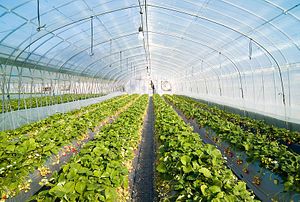After Prime Minister Shinzo Abe and his ruling LDP gave a preview last weekend of what the upcoming corporate tax cut may look like, more details have been released about some of the other pieces of Abe’s economic structural reform. While the corporate tax cut and a change in investment strategy at the Government Pension Investment Fund (GPIF) are two of the biggest items up for review, policies to improve the national birth rate and agricultural reform are also highly anticipated.
At a meeting with the Council on Economic and Fiscal Policy on Monday, Abe said “After beating deflation, the government will make efforts to implement budgetary, tax and regulatory reforms to create an environment in which the economy can achieve sustainable growth,” according to the Japan Times. In order to increase the fertility rate, which currently stands at 1.43 children per woman (well below the replacement rate), and maintain the population above 100 million, the government will increase spending to encourage couples to have three or more children. Abe said he plans to “support marriage, pregnancy, childbirth and child-rearing in a seamless manner.” The government also plans to expand the number of available spaces at Japanese day-care centers by 400,000 by 2017.
While there has been no public mention of allowing corporations to own farmland, senior LDP members have agreed to drastically overhaul the Central Union of Agricultural Cooperatives (JA-Zenchu), which represents JA agricultural cooperatives nationwide. The government Council for Regulatory Reform proposed last month that JA-Zenchu have its power to supervise the management of regional agricultural cooperatives removed, and that the union have its role changed to that of a think tank. Government sources said the administration and farm ministry are considering transferring some of JA-Zenchu’s roles to a new organization with less power.
There has so far been little mention of immigration or labor reform. Reuters reported that the government has pledged a “complete overhaul” of the foreign trainee program, “including the period of stay of workers and revision of the range of workplaces available to them.” The government has stated though that the trainee program “is not an immigration policy.” However, a group of Vietnamese nurse and caregiver candidates began language studies on Monday, as part of the first group come to the country under the Japan-Vietnam economic partnership program. According to the Japan News, once they finish the training program, they may stay and work for three to four years. If they are able to pass a national language exam within that time period, they are eligible to stay in Japan indefinitely.
Taken together, these new details still manage to fall short of the expectations Abe’s government has been creating around his latest round of economic reform. Of these three items mentioned so far this week, the plan to improve the national birthrate appears the most ambitious, yet its lack of detail as to how the government will follow through is curious. With an issue as difficult as population decline, radical measures – including immigration reform – will be necessary in order to keep the population above 100 million through 2050. As with the rest of the economic reforms to be announced at the end of the month, the specifics will show how much change Abe thinks the Japanese system can withstand.

































